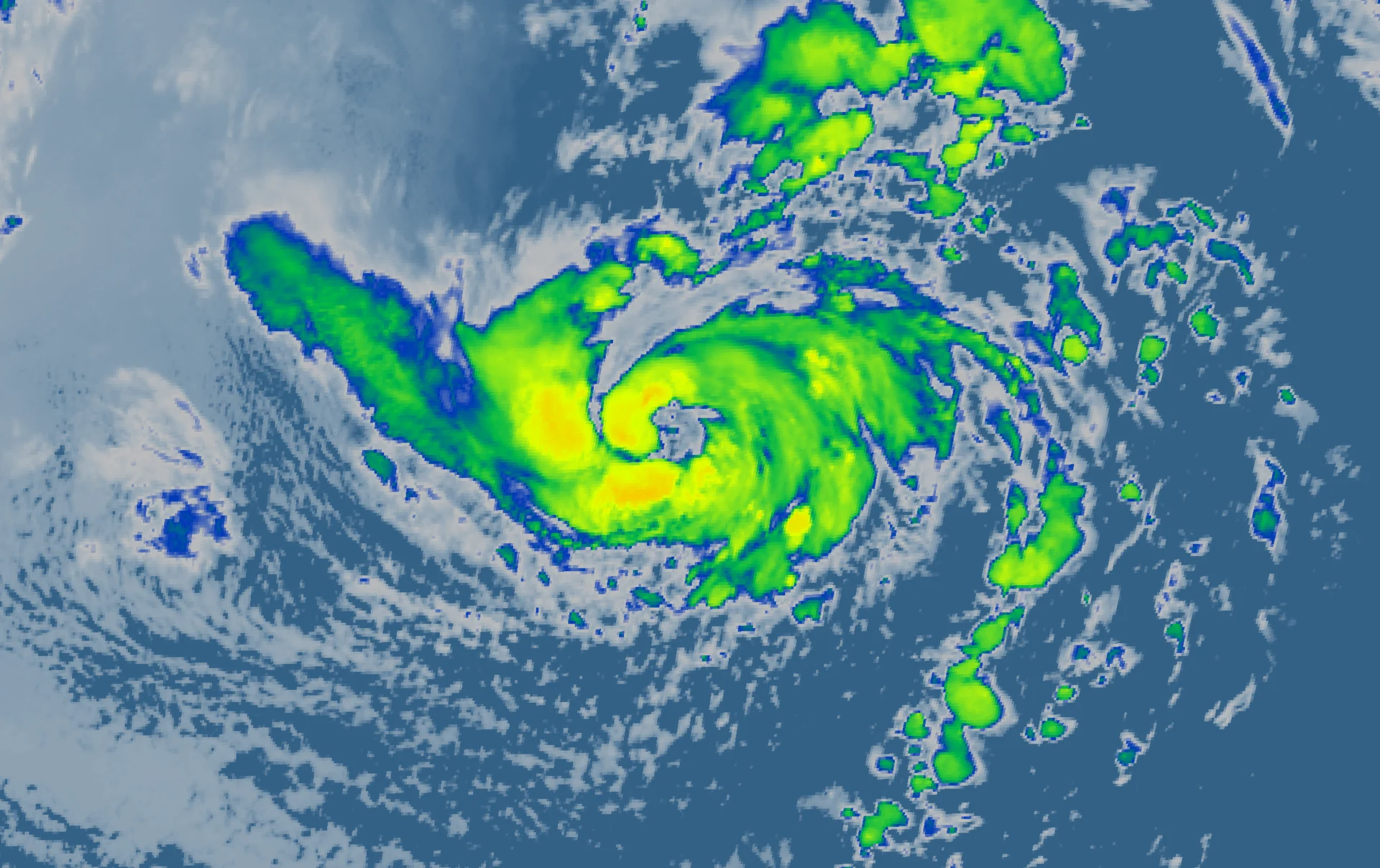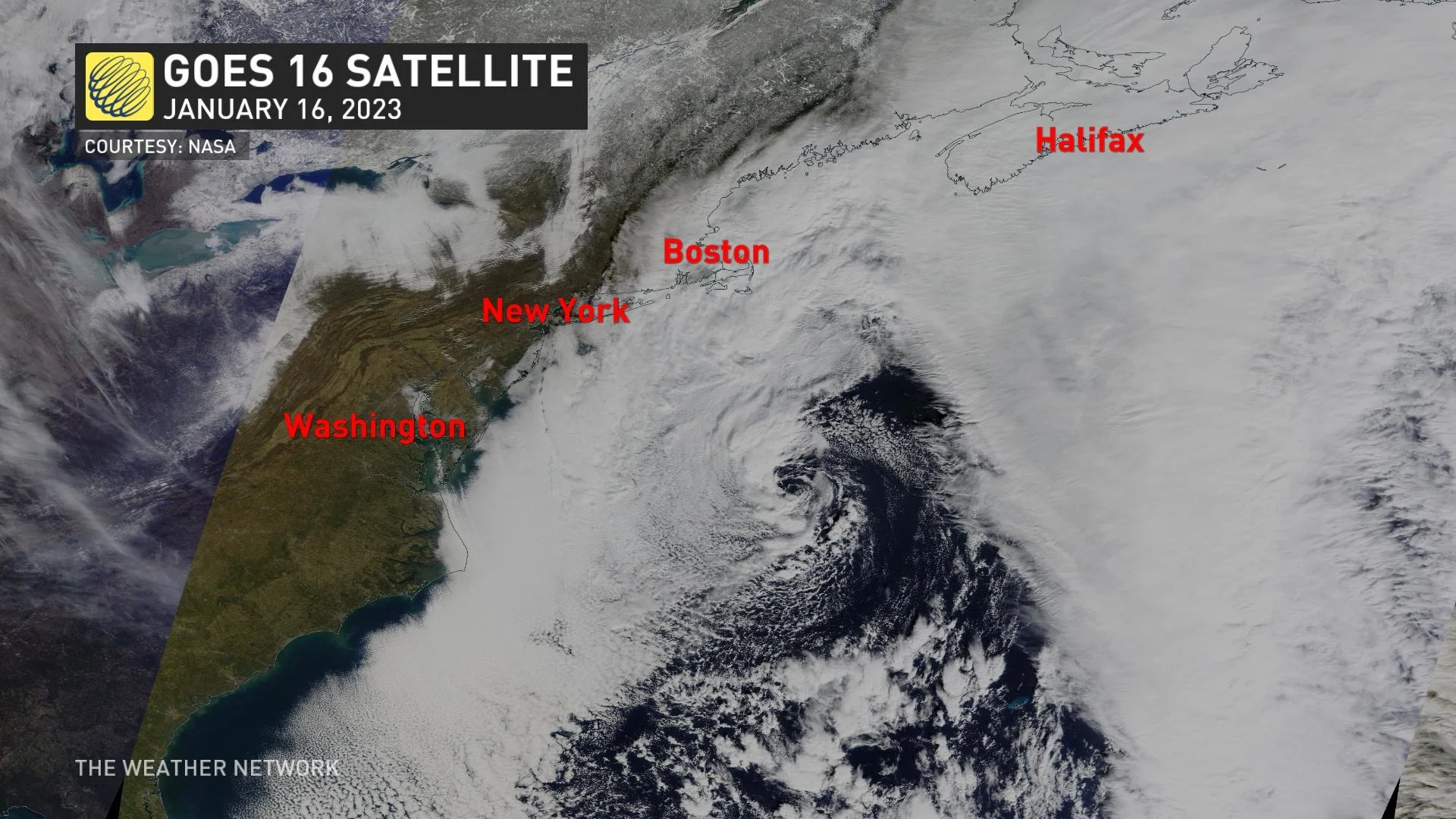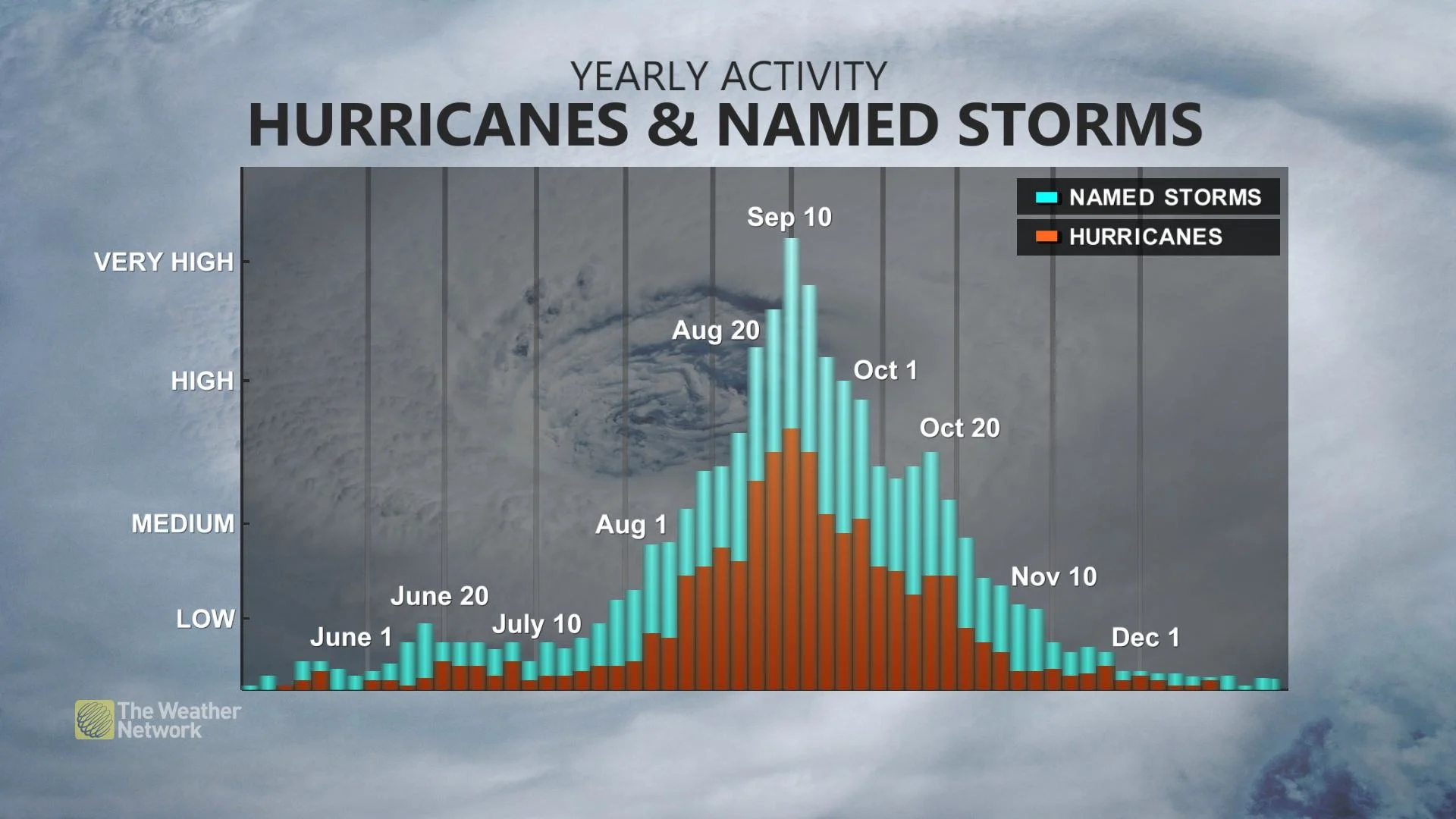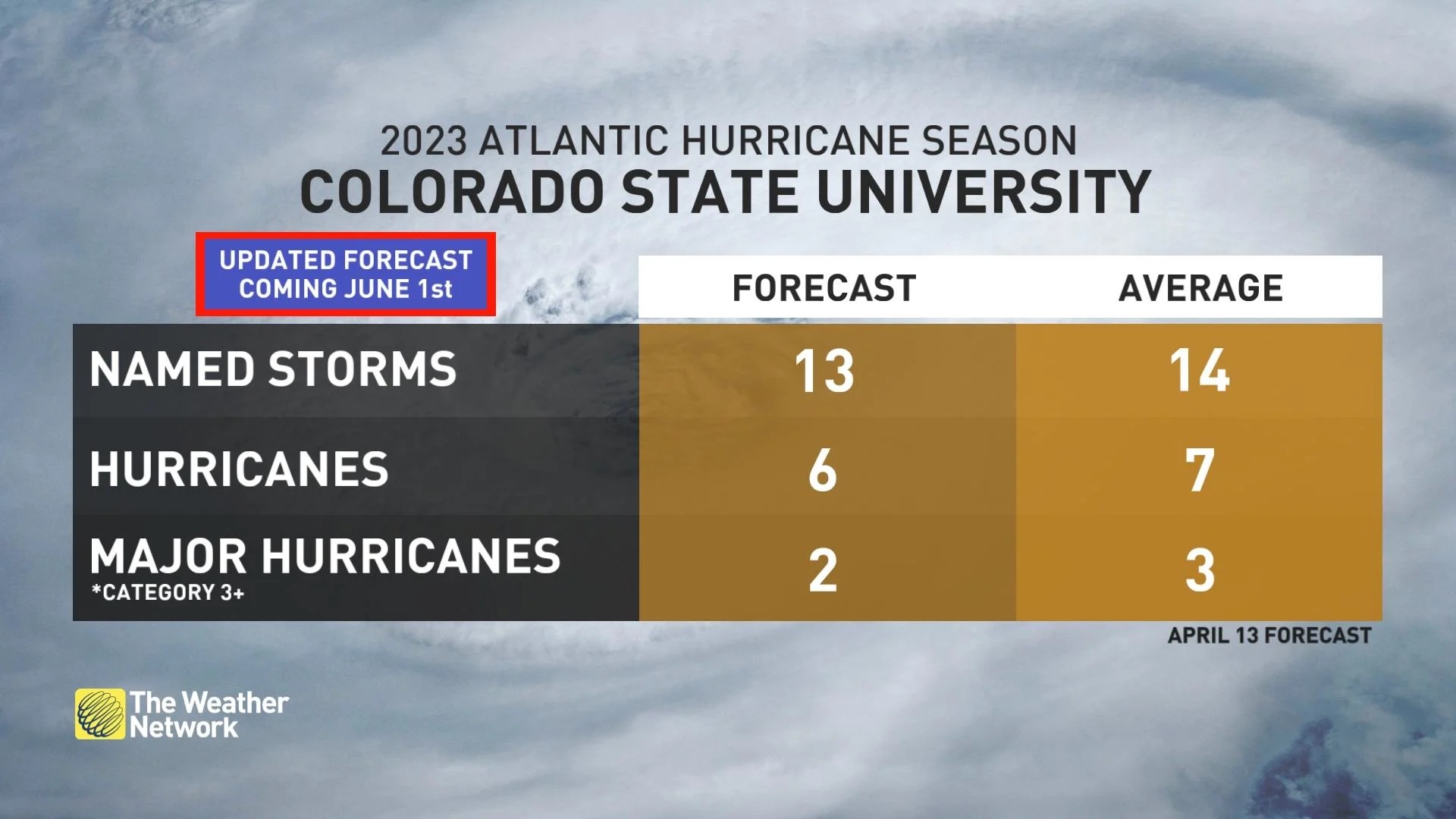
Surprise! This year’s hurricane season started with a storm in January
Forecasters announced Thursday that this year’s Atlantic hurricane season already started with an unnamed storm back in January
The U.S. National Hurricane Center (NHC) announced Thursday that the first storm of the 2023 Atlantic hurricane season came and went four months ago without fanfare, without a name, and with little more than a picturesque swirl of clouds south of the Maritimes.
Forecasters agreed in retrospect that a curiously robust system that formed between Nova Scotia and Bermuda on January 16, 2023, did indeed qualify as the first tropical cyclone of this year’s Atlantic hurricane season.
With this belated designation, eight of the past nine hurricane seasons began before the ‘official’ start date on June 1.
MUST SEE: How the Pacific warming faster than expected might affect Canada’s summer
A straggler in the middle of January
A vivacious low-pressure system swirling over the northwestern Atlantic Ocean in the middle of January brought widespread wintry weather to the Atlantic provinces as it passed through the region, blanketing the forests of New Brunswick with ice pellets while dropping a significant glaze of freezing rain from Saint John to St. John’s.
Not long after, this system took on a rather spicy appearance on visible satellite imagery as it passed over the warmer waters of the Gulf Stream. The system developed a cluster of thunderstorms around the centre of low pressure, almost appearing as if a ragged eye had developed.
As it turns out, that was this hurricane season's first storm of the year.

The NHC now considers that system to be Subtropical Storm One, the first official storm of the 2023 season, which started when the year was all of 16 days old.
Even though it retroactively qualifies as a nameable storm, it will not receive a formal name, living forever in the annals of weather history as Subtropical Storm One.
THE LATEST: Uncertainty swirls around 2023 hurricane season as El Niño looms
The next tropical system that develops later this season will be considered the second one of the year, and it will receive the name Arlene if it becomes a tropical storm.
A tropical system in January is exceedingly rare but not unprecedented. This year’s inaugural system joins a small list of tropical and subtropical cyclones that formed during the month of January.

Most recently, Hurricane Alex jumpstarted the 2016 Atlantic hurricane season when it formed near the Azores Islands in mid-January that year. A tropical storm that formed in the Caribbean back on December 30, 1954, rolled over into the new year and grew into full-fledged Hurricane Alice on January 2.
The NHC will release a full report on this system later this summer, including a technical summary detailing the forecasters’ thinking back in January and their decision to classify the storm in hindsight.
This marks the eighth hurricane season since 2015 that started before the season’s official start date of June 1, including a record seven-year streak of early starts that only ended with Tropical Storm Alex last year, which formed just a few days into June.
Given this long spell of storms starting to form earlier in the year, meteorologists have spent several years debating whether they should push the start of the Atlantic hurricane season earlier into May to account for this trend.
WATCH: Hurricane, tropical cyclone, typhoon. What's the real difference?
A subtropical storm is a hybrid on a broad spectrum of cyclones
Meteorologists classify low-pressure systems, or cyclones, based on their structure and energy source. The two main types of cyclones are extratropical cyclones—think cold fronts, blizzards, and thunderstorms—or tropical cyclones, like tropical storms and hurricanes.
But not unlike humans, cyclones are complex, and their sheer dynamism makes it a sometimes-silly task to label them and put them into neat boxes, also not unlike humans.
DON'T MISS: The curse of storm nine: Why so many “I” hurricanes are monsters
Extratropical cyclones are your ‘everyday’ type of low-pressure system, the ones that feed their energy from ripping winds in the jet stream, and feature cold and warm fronts sweeping across the land in dramatic thumps of snow and thunder.
Tropical cyclones begin from clusters of thunderstorms that intensify as they feed off warm ocean waters below. These thunderstorms suck up large amounts of air from the surface as they intensify, creating a centre of low pressure as they persist. Tropical cyclones are consistently warm and moist throughout.
But cyclones really exist on a broad spectrum that includes lots of grey area between extratropical and tropical, and that’s how we wind up with subtropical cyclones.
A subtropical cyclone maintains characteristics of both an extratropical and tropical cyclone.
Subtropical cyclones are like close cousins to tropical cyclones, and they’re close enough in structure and impacts for the NHC to classify, track, and warn these systems as if they were full-fledged tropical entities.
WATCH: A first look at the 2023 Atlantic hurricane season
Uncertainty abound as Atlantic hurricane season nears
Despite that odd storm out, forecasters are unsure about what this Atlantic hurricane season could have in store.

A developing El Niño in the eastern Pacific Ocean is usually a solid indicator that we’ll see below-normal activity in the Atlantic during the summer and fall months. El Niño events generate wind shear that flows over the Atlantic, disrupting any tropical cyclone that attempts to form.
However, waters across much of the Atlantic basin remain warmer than normal, which could provide more opportunities for tropical systems to develop, potentially offsetting El Niño’s destructive interference.
The latest forecast from hurricane experts at Colorado State University calls for a slightly below-average hurricane season this year. However, coastal residents should prepare for hurricane season as they do every year, as it only takes one storm coming ashore to make even a quiet season a destructive one.











